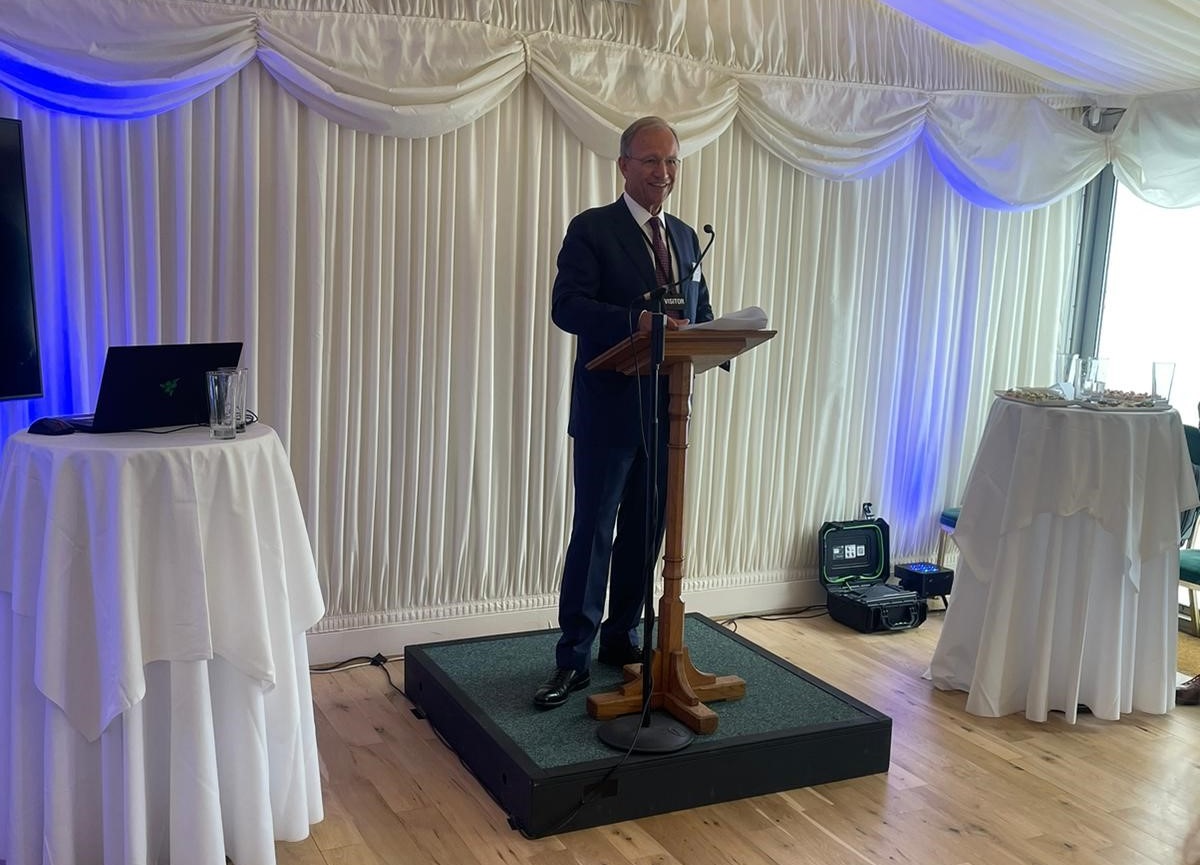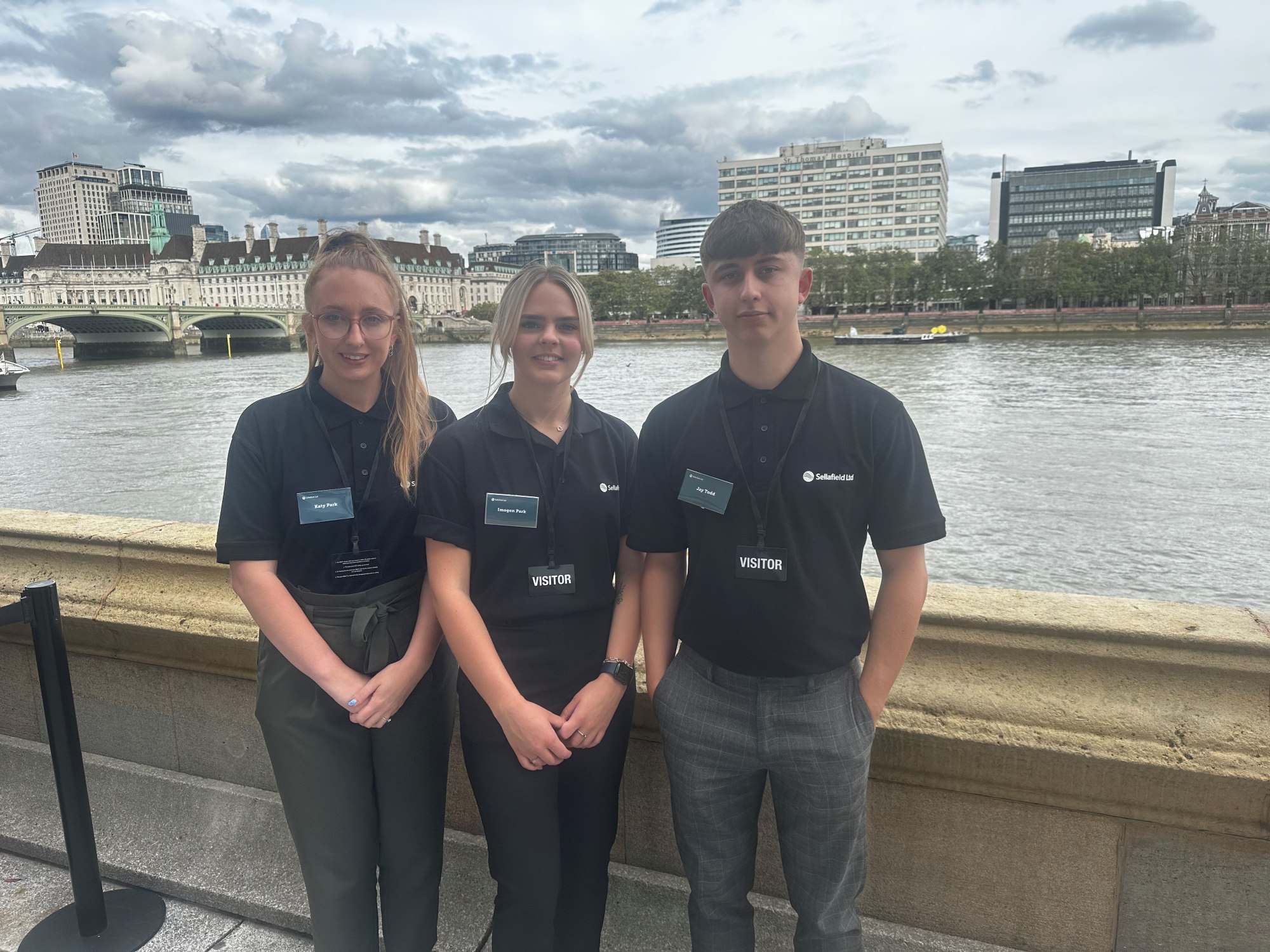Sellafield spotlight: Why innovation is thriving at the UK’s largest nuclear site
Spot the dog ready to be deployed at Calder Hall
As part of Nuclear Week in Parliament 2023, MPs and peers were given the opportunity to immerse themselves on-site at Sellafield all the way from the corridors of Westminster. PoliticsHome reports back from the event.
Whether it be supporting the nation’s energy security or tidying up the legacy of our nuclear heritage, innovation has always been at the heart of Sellafield’s clean-up mission.
That is why Sellafield was delighted to recently welcome parliamentarians, local authority leaders and industry representatives for a spotlight event. Using 3D virtual headsets, the session provided guests with a unique insight into the exciting activity being undertaken at the site and latest technology being deployed, with first-hand access to operators who work there.
Sponsoring the event as part of the Nuclear Industry Association’s Nuclear Week in Parliament was the Member of Parliament for Workington, Mark Jenkinson. Following recent big wins for the industry, including the appointment of a dedicated minister and Great British Nuclear getting off the ground, he began by saying that the UK is on “the cusp of a nuclear renaissance”: “It is great to see so many nuclear stakeholders here today, all of whom I know are absolutely committed to building on West Cumbria’s reputation as a world leader in the industry... We are on the cusp of a nuclear renaissance. I have no doubt everyone here today will all play their part in making that vision a reality”.
Touching on Sellafield’s place within that vision and on fostering the industry’s next generation of talent, Jenkinson continued: “In West Cumbria and across the wider north, Sellafield continues to train the next generation of nuclear experts through apprenticeships and lifelong learning programmes, with support from the supply chain. We have seen the creation of a project academy, the delivery of a university technical college and the National College for Nuclear northern hub, with Sellafield also playing a crucial role in new schools in the area.”
 Sellafield Chair, Tony Meggs
Sellafield Chair, Tony Meggs
Jenkinson was followed by the Chair of Sellafield, Tony Meggs. Echoing the importance of Sellafield’s mission and contribution to the surrounding area during his opening remarks, he said: “We are generating growth and employment in the North West and beyond. Our work is done by 11,000 employees supported by more than 4,000 supply chain employees on the site, who are in turn supported by a network of over 40,000 employees across the supply chain. That’s over 56,000 jobs that are supported through the work at Sellafield.”
A large contingent of Sellafield’s workforce are the 1,000 people currently completing their apprenticeship or graduate training. During the spotlight, Meggs announced that this number is set to become even greater with a record breaking 325 people due to start their career with Sellafield in September and October.
Present at the event were former apprentice Imogen, now a Remote Operated Vehicle pilot, and Jay, a degree apprentice who is helping to develop contamination prevention suits. Touching on the important contribution they and their colleagues make, Meggs commented: “Apprentices and degree apprentices like Imogen and Jay are the vital future pipeline of talent for our business and the industry. I am very proud of Sellafield's ongoing commitment to and investment in the next generation.”
Central to the success of Sellafield’s mission is fostering a positive working environment at the site: “Creating a place where each and every one of our employees feels able to bring their whole selves to work is a priority for us,” Meggs remarked.
One person at the event who is playing an important role in making this happen is Katy, who is Co-Chair of Sellafield’s autism network. Speaking to PoliticsHome about the network’s effort to promote inclusivity, she said: “I live with autism and ADHD, so have been supporting the network now for around 12 months and I am a mental health first aider as well. We have got about 200 employees at the minute that are in the network and that is those who either live with autism or have a dependant with autism. More recently there has been a demand for people who are going through the process because awareness is growing. A lot more people are coming through the door.”
 Showcasers at the event Katy, Imogen and Jay
Showcasers at the event Katy, Imogen and Jay
A dynamic and inclusive workforce is pivotal to creating the conditions where innovation can thrive – ultimately key to the site’s success. Speaking on the importance of innovation Meggs told guests: “The innovation that our work demands – work for which there is no blueprint – cannot be overstated. We need to take radiological surveys of buildings and rooms that no person can physically access. We need to empty ponds and storage silos, each full of nuclear waste, spent fuel and sludge, that were never designed to be emptied. And we have to create the new facilities we need to keep the materials that are recovered safe and secure for the long-term.”
Helping Sellafield to achieve this is their supply chain partner, Createc, who have combined efforts with Boston Dynamics to develop Spot the dog. Spot is transforming the future of clean-up work at the site by accessing areas which would otherwise be hazardous to humans. Commenting on its use in nuclear decommissioning at Sellafield, Createc’s Neil Owen said: “The whole purpose of Spot is as a platform. It is a robotic system but it’s a means to carry in equipment, payloads into environments. It depends on the project, but primarily you are trying to get in somewhere where you don’t want humans to go. You can send it into unknown environments and that is really the power of it.”
Speaking to politicians in the room, it is clear that Sellafield is regarded as an integral part of the country and West Cumrbia’s future. When asked about the importance of the site to the UK’s energy supply and security, the Leader of Cumberland Council, Cllr Mark Fryer, told PoliticsHome it was “absolutely essential” and “leads the race alongside others” to provide employment opportunities locally.
Meanwhile, the site’s local MP and Parliamentary Under-Secretary of State for Environment, Trudy Harrison, added:
“The Sellafield site in West Cumbria, home of Calder Hall really was the very beginning of our UK civil nuclear electricity generating story. Calder Hall was officially opened by HM Queen Elizabeth II in 1956. We now have a proud history of seven reactors across the site and a plethora of complex systems for managing their safe decommissioning, along with other fissile material storage from around the globe.
“It is the work of today’s 27,000 nuclear workforce in my community, and their predecessors, that gives this Government a social licence to commit to 24GW of nuclear power by 2050. Nowhere else in the UK or indeed Europe can match our concentration of knowledge in design, construction, commissioning and operations to decommissioning and safe storage expertise. And to ensure we continue that legacy of world class skills, we have an ever increasing pipeline of apprentices and graduates joining the Sellafield and supply chain workforce every year. From Calder Hall it began, and from Sellafield I’m confident it must begin again.”
For more information about Sellafield’s announcement on its 2023 apprenticeship and graduate intake, please click here.
